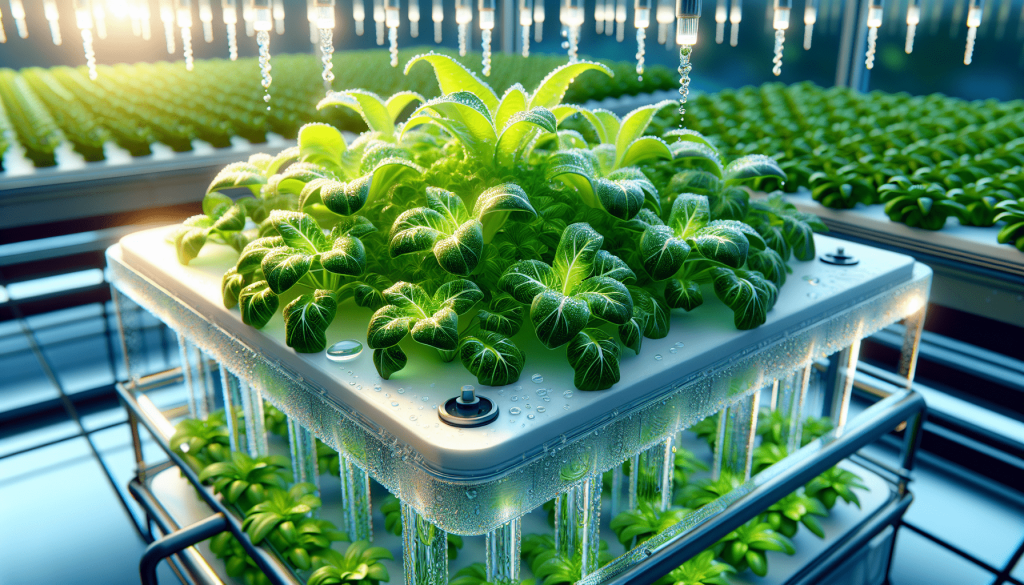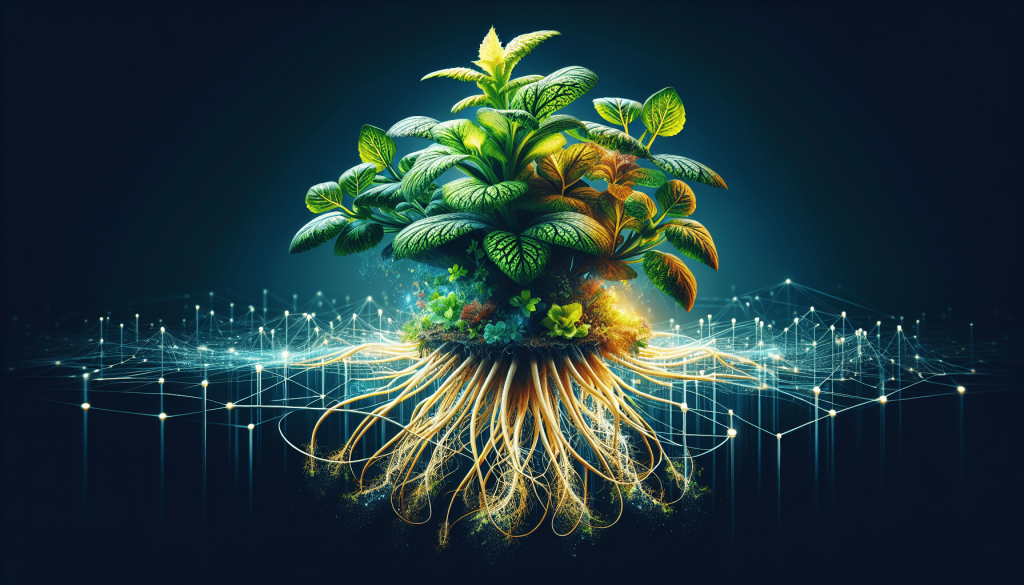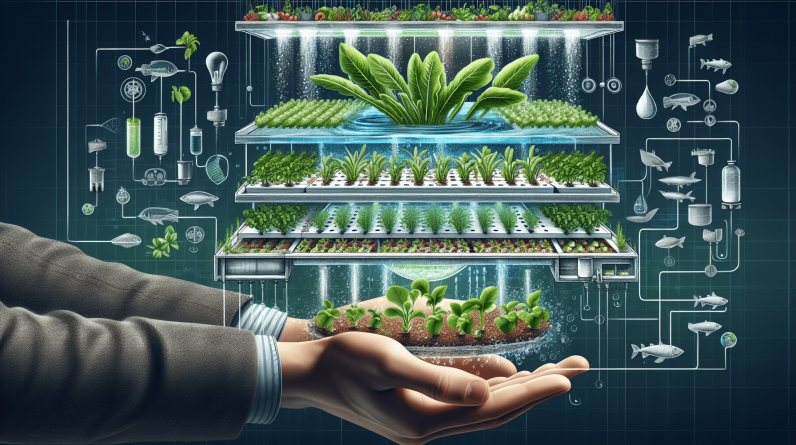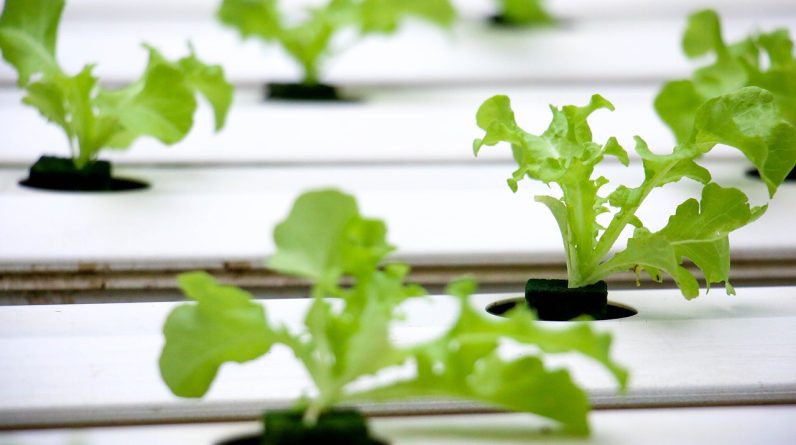
Are you tired of traditional gardening and looking for a more innovative and efficient way to cultivate plants? Look no further! In this article, we will explore the top plants that thrive in hydroponic gardening, a soil-less method that uses water and nutrients to nourish plants. Whether you’re a seasoned gardener or just starting out, hydroponic gardening offers a host of benefits, including faster growth, higher yields, and the ability to grow plants year-round. So, grab your watering can and let’s dive into the exciting world of hydroponic gardening!

Introduction to Hydroponic Gardening
Welcome to the world of hydroponic gardening! If you’ve been looking for a unique and efficient way to grow plants, then you’re in the right place. Hydroponic gardening involves growing plants without soil, using water enriched with nutrients instead. It’s a fascinating method that offers incredible advantages and allows you to grow a wide variety of plants. In this article, we’ll explore the definition of hydroponic gardening, its advantages, and the basic principles behind it.
Definition of Hydroponic Gardening
Hydroponic gardening is a method of cultivating plants without the use of traditional soil. Instead, the plants are grown in a nutrient-rich water solution, which provides everything they need to thrive. This innovative approach allows for precise control over the nutrient levels, pH levels, and environmental conditions, resulting in faster growth and higher yields. By eliminating the variable of soil, hydroponic gardening opens up a world of possibilities for growing plants in various settings, from small indoor setups to large-scale commercial operations.
Advantages of Hydroponic Gardening
Hydroponic gardening offers numerous advantages that make it a popular choice among plant enthusiasts. One of the key benefits is water efficiency. With hydroponics, water is recirculated within the system, reducing water usage by up to 90% compared to traditional soil-based gardening. Additionally, since the plants receive nutrients directly in the water, they require less energy for root growth, allowing them to focus their energy on growing larger leaves and producing more bountiful harvests.
Another advantage of hydroponics is the ability to grow plants in any location. Whether you have limited outdoor space, no access to suitable soil, or simply want to garden indoors, hydroponics provides a versatile solution. By controlling the environment, from lighting to temperature and humidity, you can create the perfect growing conditions year-round. This makes hydroponics ideal for urban dwellers, apartment living, and locations with harsh climates.
Basic Principles of Hydroponics
To have a successful hydroponic garden, you need to understand the basic principles that govern this unique method. The first principle is the use of a growing medium. Although hydroponic plants don’t rely on soil for nutrients, they still need support for their roots. Common growing mediums include perlite, coco coir, expanded clay pellets, and rockwool. The choice of growing medium depends on the specific needs of the plants you are growing.
The second principle is the nutrient solution. In hydroponic gardening, the plants are fed with a carefully calibrated mixture of nutrients dissolved in water. This solution provides all the necessary elements for growth, including macronutrients like nitrogen, phosphorus, and potassium, as well as micronutrients like iron, calcium, and zinc. By precisely controlling the nutrient levels, you can optimize the growth and health of your plants.
The third principle is maintaining the pH level of the nutrient solution. pH is a measurement of the acidity or alkalinity of a substance, and different plants have different pH preferences. Most hydroponic plants thrive in a pH range of 5.5 to 6.5. By monitoring and adjusting the pH of the nutrient solution, you can ensure that the plants can absorb nutrients effectively and avoid nutrient deficiencies or toxicities.

Choosing Plants for Hydroponic Gardening
Now that you understand the basics of hydroponic gardening, let’s explore the types of plants that are best suited for this method. When selecting plants for your hydroponic garden, there are several factors to consider to ensure success.
The first factor is the size and growth habit of the plant. Since hydroponic systems typically have limited space, plants that are compact and have a vertical growth habit are ideal. This allows you to maximize your yield within a confined area. Additionally, consider the root system of the plant. Plants with smaller, fibrous roots tend to adapt better to hydroponic systems.
The second factor is the nutrient requirements of the plant. Some plants have specific nutrient needs or are more demanding in terms of nutrient availability. It’s important to choose plants that can thrive in the nutrient solution you are providing and won’t suffer from deficiencies or toxicities.
Lastly, consider the overall suitability of the plant for hydroponic systems. Some plants are just better suited for this method due to their adaptability, ability to withstand fluctuating environmental conditions, and tolerance for the absence of soil. Let’s explore some popular choices for hydroponic gardening.
Leafy Greens
Leafy greens are a great choice for hydroponic gardening. They grow quickly, have shallow root systems, and offer a continuous harvest throughout the season. Here are five leafy greens that thrive in hydroponic systems:
Lettuce
Lettuce is a staple in many salads and sandwiches, and it’s incredibly easy to grow hydroponically. With a variety of types and colors, you can enjoy a vibrant mix of lettuces right at your fingertips.
Spinach
Spinach is packed with essential nutrients and offers a delicious addition to many dishes. Its compact growth habit and quick growth make it well-suited for hydroponics.
Kale
Kale has gained popularity in recent years due to its incredible nutritional value. It grows well in hydroponic systems and provides a continuous harvest of hearty, dark green leaves.
Swiss Chard
Swiss chard is not only visually stunning with its vibrant stems and glossy leaves, but it also offers a mild and versatile flavor. It’s an excellent choice for hydroponic gardening.
Arugula
Arugula, with its peppery taste, adds a delightful kick to salads and sandwiches. Its fast growth makes it a favorite among hydroponic gardeners.

Herbs
Herbs are another category of plants that thrive in hydroponic systems. They are known for their strong flavors and medicinal properties. Here are five herbs that are well-suited for hydroponic gardening:
Basil
Basil is a popular herb for Italian cuisine and adds a fresh and aromatic touch to many dishes. It grows quickly and thrives in hydroponic setups.
Cilantro
Cilantro is a versatile herb used in various cuisines. It’s known for its bright flavor and pairs well with many dishes. Cilantro is easy to grow hydroponically and offers a bountiful harvest.
Mint
Mint is a refreshing herb that can be used in teas, cocktails, and desserts. It is a vigorous grower and does well in hydroponic systems, allowing you to enjoy its cool flavor year-round.
Parsley
Parsley is a staple herb in many recipes and adds a fresh and vibrant taste. It’s relatively easy to grow hydroponically and provides a consistent supply of aromatic leaves.
Chives
Chives offer a mild onion flavor and can be used as a garnish or added to various dishes. They are well-suited for hydroponic gardening, thanks to their small and compact growth habit.
Fruiting Plants
If you’re looking to grow fruits hydroponically, there are several options to choose from. While these plants may require a bit more attention and care, the results are worth it. Here are five fruiting plants that thrive in hydroponic systems:
Tomatoes
Tomatoes are a popular choice for hydroponic gardening due to their versatility and rich flavors. With proper support and care, you can enjoy a bountiful harvest of juicy tomatoes throughout the year.
Peppers
Peppers come in a variety of colors and heat levels, making them a versatile addition to any hydroponic garden. From sweet bell peppers to fiery chili peppers, the options are endless.
Cucumbers
Cucumbers thrive in hydroponic systems and offer a refreshing and crisp addition to salads and sandwiches. With proper trellising, you can maximize your yield in limited space.
Strawberries
Strawberries are a sweet and luscious treat that can be successfully grown hydroponically. Their compact growth habit makes them perfect for hanging baskets or vertical towers.
Melons
Melons, such as watermelons and cantaloupes, require more space and attention, but they can be grown hydroponically. With proper support and care, you can enjoy the sweet and juicy rewards.

Root Vegetables
Although some root vegetables may pose a challenge for hydroponic gardening, there are still a few options that can thrive in this method. Here are five root vegetables that you can consider growing hydroponically:
Carrots
Carrots can be grown hydroponically, but they require specific conditions to ensure proper root development. With the right setup and attention to detail, you can harvest sweet and crunchy carrots.
Radishes
Radishes are a quick-growing root vegetable that adapts well to hydroponic systems. They add a delightful crunch and peppery flavor to salads and other dishes.
Beets
Beets offer a burst of earthy sweetness and vibrant colors. While they can be challenging to grow hydroponically, with the right techniques, you can enjoy homegrown beets throughout the year.
Turnips
Turnips are another root vegetable that can be successfully grown hydroponically. Their mild and slightly sweet flavor makes them a versatile ingredient in various recipes.
Potatoes
Potatoes are a staple in many cuisines and can be grown hydroponically. While they may require more space and attention, the rewarding harvest is well worth it.
Vining Plants
Vining plants add a touch of elegance and drama to a hydroponic garden. With proper support and space, these plants can thrive and provide you with delicious harvests. Here are five vining plants to consider:
Beans
Beans are a great option for hydroponic gardening due to their quick growth and plentiful yields. From green beans to runner beans, you can enjoy a variety of flavors and textures.
Peas
Peas are a sweet and versatile vegetable that can be enjoyed fresh or cooked. They grow well in hydroponic systems and provide a continuous harvest throughout the season.
Squash
Squash plants, including zucchini and yellow squash, require more space but can still be grown hydroponically. Their vibrant colors and delicious flavors make them a great addition to any garden.
Luffa
Luffa, also known as the sponge gourd, is a unique vining plant that can be grown hydroponically. Besides being a fascinating addition to your garden, it produces practical and natural sponges.
Gourds
Gourds come in various shapes, sizes, and colors, and they can be grown hydroponically. From ornamental gourds to edible varieties, they add beauty and diversity to your hydroponic garden.

Edible Flowers
Edible flowers can add a burst of color and unique flavors to your hydroponic garden. They are not only visually stunning but can be used to enhance the taste and presentation of your culinary creations. Here are five edible flowers to consider:
Nasturtium
Nasturtiums are vibrant and peppery flowers that can be used in salads, garnishes, or even as a colorful addition to vinegars and marinades. They are easy to grow hydroponically.
Calendula
Calendula flowers are known for their bright colors and medicinal properties. These blooms can be used in teas, infused oils, or even to add a touch of elegance to salads and desserts.
Pansy
Pansies come in a wide range of colors and offer a mild and slightly sweet flavor. They make a beautiful addition to salads, pastries, or as a garnish on savory dishes.
Borage
Borage flowers are stunning with their vibrant blue color and subtle cucumber flavor. They can be used in beverages, desserts, or even frozen in ice cubes for an elegant touch.
Chamomile
Chamomile flowers are well-known for their calming properties and delicate flavor. They can be dried and used to make tea or added to baked goods for a unique twist.
Nutrient Requirements for Hydroponic Plants
In hydroponic gardening, it is crucial to provide your plants with the right balance of nutrients for optimal growth and health. Plants require both macronutrients and micronutrients to thrive.
Macronutrients
Macronutrients are the elements that plants need in large quantities. The primary macronutrients are nitrogen (N), phosphorus (P), and potassium (K). Nitrogen is necessary for leaf and stem growth, phosphorus supports root development and flowering, and potassium is essential for overall plant health and disease resistance. These macronutrients can be supplied through various hydroponic nutrient solutions available in the market.
Micronutrients
Micronutrients are the trace elements that plants need in smaller quantities. They include iron (Fe), calcium (Ca), magnesium (Mg), zinc (Zn), and others. Micronutrients are essential for specific plant functions, such as chlorophyll production, enzyme activation, and overall growth. Many hydroponic nutrient solutions contain the necessary micronutrients, but it’s important to monitor and adjust their levels based on the needs of your plants.
Balancing pH Levels
Maintaining the proper pH level of the nutrient solution is crucial for the plants’ ability to absorb nutrients effectively. Most hydroponic plants prefer a slightly acidic pH range of 5.5 to 6.5. If the pH is too high or too low, the plants may experience nutrient deficiencies or toxicities. Regularly testing and adjusting the pH of your nutrient solution is necessary to ensure healthy plant growth.
Conclusion
Hydroponic gardening opens up a world of possibilities for growing a wide variety of plants in any location. From leafy greens to fruiting plants, herbs to root vegetables, and even edible flowers, there are countless options for your hydroponic garden. By understanding the basic principles of hydroponics and selecting plants that are well-suited for this method, you can enjoy the benefits of water-efficient, year-round gardening. So why wait? Start your hydroponic garden today and watch your plants flourish in a soil-free environment. With a bit of knowledge and enthusiasm, you’ll soon be reaping the rewards of your own thriving hydroponic oasis. Happy gardening!
Related Content
- The Ultimate Guide to 10 Effective Small Hydroponic System Strategies for 2025
- A Comprehensive Guide to Selecting Hydroponic Lighting
- Why Hydroponic Leafy Greens Are Superior to Soil-Grown
- The Ultimate Guide to the 2025 Hydroponic System for Beginners That Guarantees Success
- Maximizing Yield: How to Optimize Your Hydroponic Growing System







